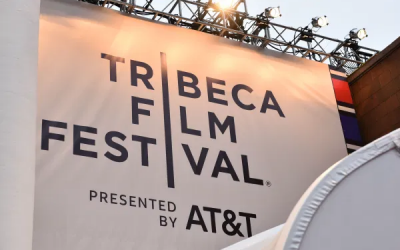
As the first film made outside the United States and the English language to receive the highly coveted Academy Award for Best Picture, Bong Joon-ho’s “Parasite” has sparked an interest in foreign films that had not been seen often in the years prior, with more and more people coming to see what it is about this work of South Korean cinema that has won the hearts of Academy voters. In doing so, some of these moviegoers are having to contend with the one thing that has kept them (and others) away from foreign language films: subtitles.
As “Parasite” is a South Korean film, its actors speak entirely in the Korean language. Because of this, audiences outside of South Korea have had to rely on subtitles that translate the film’s
dialogue into their own native language. While reading these subtitles is of concern to many, some have questioned why the filmmakers don’t just re-record dialogue so that it’s in the language that the audience speaks themselves. Why make people read the screen when they can just hear the film in a language they can understand?
This is the question at the heart of an ongoing debate about how one should view foreign films. Which is the better method: dubbing, having native actors record dialogue translated from one language to another, or subtitles, displaying the translated dialogue as text near the bottom of the screen?
Perhaps it’s best to begin this discussion by defending the technique of dubbing and how it fulfills the shortcomings of subtitles. The biggest difference between subtitles and dubbing is the sense used to interpret what is being said. Dubbing is heard, and subtitles are seen, and given that film is a predominantly visual medium, this can be a problem when it comes to paying attention. When there is so much being shown on the screen at a given time, and it’s critical that audiences see what is happening in order to understand the scene, subtitles can be a distraction. For some, it may be too difficult to comprehend what is going on at a given point in the movie when they are constantly having to look away from the action and characters in order to figure out what it is they are saying.
With dubbing, this is no issue. Because the sound in now in an understandable language, these same people can now pay greater attention to what is being shown on the screen, as they can now listen to whatever information is being conveyed without having to look away from the action. This is especially important when it comes to films aimed at a younger audience. Compared to adults and older audience members, children generally do not have particularly long attention spans, and if they are not fully captivated by what is in front of them, they may lose interest very quickly. Subtitles can be an immediate deal-breaker in this scenario; most children are more attentive to visuals and sound than they are to text, so when they constantly have to read in order to know what characters are saying, they may get frustrated and no longer want to watch.
This is something that Walt Disney Pictures attempted to avoid when acquiring the North American rights to the filmography of Japanese animation giant Studio Ghibli in the early 2000’s. When releasing films like “Spirited Away” and “Howl’s Moving Castle” to American audiences, Disney created brand new dubs for these films that translated the characters’ dialogue into the English language. This allowed the company to release the films in theaters and enable audiences to enjoy the films without having to be distracted by subtitles and/or unable to understand the films’ native Japanese language (although some screenings did offer the films in Japanese with English subtitles for those interested).
That being said, dubbing is an extremely difficult process that isn’t always pulled off particularly well. For one thing, the actors hired to record translated dialogue may not be able to give quality performances that match those of the actors in the original film. Combining a strong visual performance with a weak vocal performance can result in an uneven and unconvincing effect, making what was originally fairly solid in its native language significantly less engaging when spoken in a new one.
There’s also the issue of lip-synching that can make dubbing a challenge. Because lip movements differ greatly from language to language, finding the right words to match the lip movements of the characters while still retaining the original meaning of the dialogue is not always plausible, and audiences may be put off by how the spoken dialogue and the movement of the actors’ mouths do not line up exactly. When both this and the underwhelming vocal performances end up being a problem, the result is a dub that is more laughable than it is loveable. All one needs to do is watch a random episode of “Mystery Science Theater 3000” to understand this issue; many of the films mocked on the show are foreign films dubbed (often very poorly) in the English language.
Even when the dub is of generally high quality, there may be some elements of the film’s original story that may not translate as well in a different language. While Disney’s dubs of Studio Ghibli films have strived to remain as faithful to the original versions as possible, some changes had to have been made to better suit an English-speaking audience. In doing so, they take away some culture-specific elements essential to how the films read in their native Japanese. For example, the films “Kiki’s Delivery Service” and “Princess Mononoke” reflect how Japanese culture tends to associate specific genders to animals regardless of a specific animal’s sex. “Kiki” portrays the male cat Jiji with a female voice (as cats are considered a more feminine animal), and in “Mononoke”, the female wolf Moro is given a male voice, in line with Japan’s view of the wolf as a masculine animal. In Disney’s English dubs however, all of this is ignored, and both animal characters are given voices more in line with their specific genders. While this may not ruin the films entirely, it does deprive them of some of their cultural background, meaning that audiences are not able to get an entirely authentic experience that Japanese speakers are able to.
With subtitles however, none of this is an issue. Apart from the display of translated text across the bottom of the screen, the original film remains mostly intact as they were when they were first completed. A filmmaker is able to retain their original vision for their film without having to make alterations that would be more acceptable to a foreign audience, so moviegoers that view a subtitled film will be able to see it exactly as it was originally intended. This may not be easy to appreciate when one is constantly having to look at the text on the bottom of the screen, but those who are able to find the right balance between reading subtitles and watching the visual action find themselves fully immersed in the cinematic experience being presented to them.
Another benefit of subtitles is how much they can help those with hearing impairments, who may not otherwise be fully capable of getting a full understanding of what they are watching even when the film was originally made in their native language. Because such people do not have the advantage of hearing everything being spoken, they are reliant mainly on visuals to help them understand what is happening, and often, the visuals alone are not enough for full comprehension. Subtitles, on the other hand, fill in the gaps for these people. By reading what the characters are saying, people with hearing disabilities can watch what is happening on screen and be able to interpret what is being said without having to use their ears to do so.
In a way, subtitles and other forms of on-screen text have always been useful in bridging the gap between a film and those who do not speak its language. In fact, during the silent era of cinema, films had no dialogue whatsoever, and whatever words needed to be conveyed were shown through intertitles, shots of text between visual scenes. This allowed moviegoers of all backgrounds to enjoy the medium of cinema regardless of their native language, especially immigrants who had not learned English and were able to adopt film as their primary source of art and entertainment. Even with the innovation of sound and other technological breakthroughs in the century since, the written word, when translated properly, has been an essential asset in helping break the language barrier for potential new audiences.
So which is better: dubbing or subtitles? At the end of the day, it depends on the person, the film, and a variety of other factors. While dubbing allows a viewer to watch a film with minimal distraction, subtitles allow a film to remain as it was originally envisioned. Every person has different tastes, and every film will only appeal to a specific number of tastes, and how subtitles or dubbing will influence those tastes varies dramatically in each situation.




